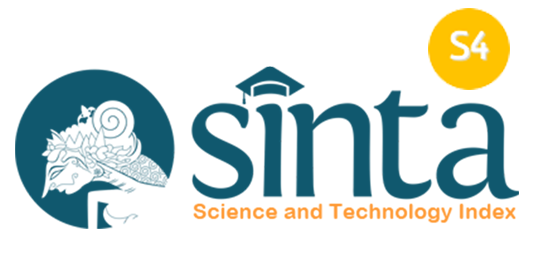Examing type and quality of preservice teachers’ lessons based on children’s literature
Abstract
This qualitiative research explores the types and levels of mathematical lesson tasks that 60 future elementary and middle school teachers created during an undergraduate mathematics content and pedagogy course. Data collection consisted of 51 children’s book inspired activities written by the preservice teachers. Using Stein et al.’s Task Analysis Guide as an assessment tool, the researchers coded the activities into 1 of 4 categories, as well as categorized each activity based on its mathematical content using the Common Core State Standards for Mathematics. Results showed that a majority of the PSTs wrote activities that were classified as Procedures with Connections. Also, a majority of the activities were geometry-based, specifically transformations and two-dimesional measurements. Implications for teaching include the fact that preservice elementary and middle school teachers can create mathematics lessons based on children’s literature, which often can include mathematical tasks that are making connections to procedural mathematics or even higher order thinking tasks.
Keywords
Full Text:
PDFReferences
Amirshokoohi, A., & Wisniewski, D. P. (2018). Constructing understanding in a mathematics methods course, Teaching Children Mathematics, 24(7), 442-451.
Bekdemir, M. (2010). The pre-service teachers' mathematics anxiety related to depth of negative experiences in mathematics classroom while they were students. Educational Studies in Mathematics, 75(3), 311-328.
Bjerke, A. H., & Eriksen, E. (2016). Measuring pre-service teachers’ self-efficacy in tutoring children in primary mathematics: an instrument. Research in Mathematics Education, 18(1), 61-79.
Boston, M., & Smith, M. (2009). Transforming secondary mathematics teaching: Increasing the cognitive demands of instructional tasks used in teachers' classrooms. Journal for Research in Mathematics Education, 40(2), 119-156.
Burns, M. (1994). The greedy triangle. Scholastic Inc.
Bush, W. (1986). Preservice teachers’ sources of decisions in teaching secondary mathematics. Journal for Research in Mathematics Education, 17(1), 21-30.
Charalambos, C. Y., Philippou, G. N., & Kyriakides, L. (2008). Tracing the development of preservice teachers’ efficacy beliefs in teaching mathematics during fieldwork, Educational Studies in Mathematics, 67(2), 125-142.
Charalambos, C. (2010). Mathematical knowledge for teaching and task unfolding: An exploratory study. The Elementary School Journal. 110(3), 247-278.
Common Core State Standards Initiative (CCSSI). (2010). Common core state standards for mathematics. National Governors Association Center for Best Practices and the Council of Chief State School Officers. http://www.corestandards.org/wp-content/uploads/Math_Standards.pdf
Cruz, J. M., Wilson, A. T., & Wang, X. (2019). Connections between pre-service teachers' mathematical dispositions and self-efficacy for teaching mathematics. International Journal of Research in Education and Science, 5(2), 400-420.
Harkness, S., D'Ambrosio, B., & Morrone, A. (2007). Preservice elementary teachers’ voices describe how their teacher motivated them to do mathematics. Educational Studies in Mathematics, 65(2), 235-254.
Hembree, R. (1990). The nature, effects, and relief of mathematics anxiety. Journal for Research in Mathematics Education, 21(1), 33-46.
Hsu, H. Y., & Silver, E. A. (2014). Cognitive complexity of mathematics instructional tasks in a Taiwanese classroom: An examination of task sources. Journal for Research in Mathematics Education, 45(4), 460-496.
Huang, T-H., Liu, Y-C, & Chang, H-C. (2012). Learning achievement in solving word-based mathematical questions through a computer-assisted learning system. Journal of Educational Technology & Society, 15(1), 248-259.
Jones, D., & Tarr, J. (2007). An examination of the levels of cognitive demand required by probability tasks in middle grades mathematics texts. Statistics Education Research Journal, 6(2), 4-27.
Kessler, L. (2014). Mr. Pine’s purple house. Purple House Press.
Kessler, A. M., Stein, M. K., & Schunn, C. D. (2015). Cognitive demand of model tracing tutor tasks: Conceptualizing and predicting how deeply students engage. Tech Know Learn, 20(3), 317-337.
National Council of Teachers of Mathematics. (2000). Principles and standards for school mathematics. NCTM.
Neuschwander, C. (1999). Sir cumference and the dragon of pi. Charlesbridge.
Norton, S. (2019). Middle school mathematics pre-service teachers’ content knowledge, confidence and self-efficacy. Teacher Development, 23(5), 529-548.
Phelps, C. (2010). Factors that pre-service elementary teachers perceive as affecting their motivational profiles in mathematics. Educational Studies in Mathematics, 75(3), 293-309.
Philippou, G., & Christou, C. (1998). The effects of a preparatory mathematics program in changing prospective teachers' attitudes towards mathematics, Educational Studies in Mathematics, 35(2), 189-206.
Phillips, J., Clemmer, K., McCallum, J., & Zachariah, T. (2017). A problem-solving framework to assist students and teachers in STEM courses. Journal of College Science Teaching, 46(4), 33-39.
Pólya, G. (2004). How to solve it: A new aspect of mathematical method. Princeton University Press.
Reynolds, P. (2003). The dot. Candlewick.
Rofiki, I., & Santia, I. (2018). Describing the phenomena of students’ representation in solving ill-posed and well-posed problems. International Journal on Teaching and Learning Mathematics, 1(1), 39-50.
Rubin, A. (2015). Those darn squirrels fly south. Houghton Mifflin Harcourt.
Sherman, M. F., Cayton, C., & Chandler, K. (2017). Supporting PSTs in using appropriate tools strategically: A learning sequence for developing technology tasks that support students’ mathematical thinking, Mathematics Teacher Educator, 5(2), 122-157.
Smith, M. S., & Stein, M. K. (1998). Selecting and creating mathematical tasks: From research to practice. Mathematics Teaching in the Middle School, 3(5), 344-350.
Stein, M. K., Smith, M. S., Henningsen, M., & Silver, E. A. (2000). Implementing standards-based mathematics instruction: A casebook for professional development. Teachers College Press.
Van de Walle, J. A., Bay-Williams, J. M., Lovin, L. H., & Karp, K. S. (2018). Teaching student-centered mathematics: Developmentally appropriate instruction for grades 6-8. Pearson.
Willems, M. (2010). Can I play too? Hyperion Books for Children.
Yimer, A., & Ellerton, N.F. (2010). A five-phase model for mathematical problem solving: Identifying synergies in pre-service-teachers’ metacognitive and cognitive actions. ZDM Mathematics Education, 42(2), 245–261.
DOI: https://doi.org/10.18860/ijtlm.v3i1.9206
Refbacks
- There are currently no refbacks.
Copyright (c) 2020 International Journal on Teaching and Learning Mathematics

This work is licensed under a Creative Commons Attribution-NonCommercial-ShareAlike 4.0 International License.
Indexed by :
.png)
.jpg)
.png)

.jpg)



